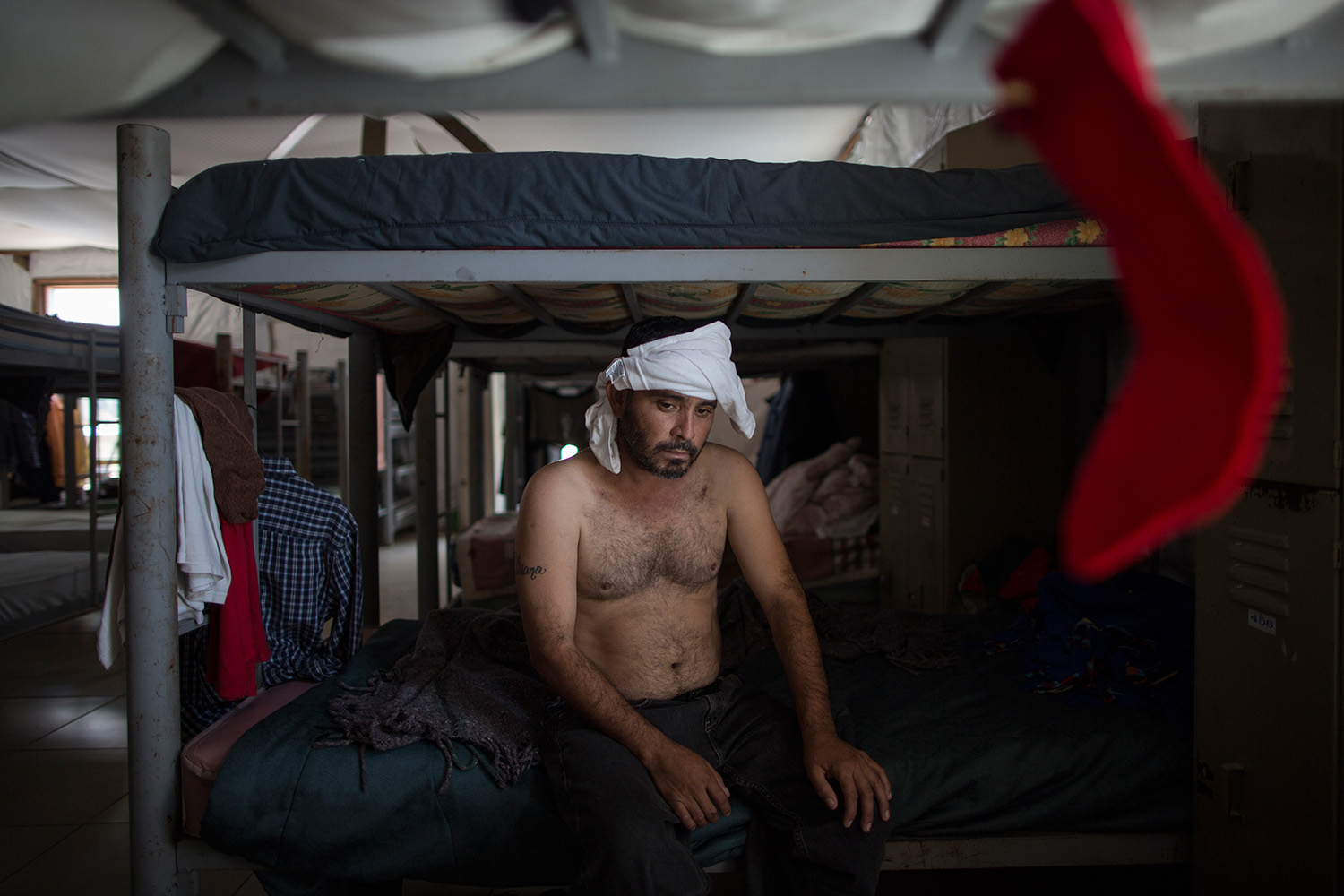Tales from the border: Day 2

Fewer migrants risking the border
At the Senda de Vida migrant shelter in Reynosa, Mexico, workers are putting the finishing touches on a spectacular new soccer field with plush artificial turf, lights and bleachers. If a shot were to sail long it could land in the Rio Grande, which runs between the city and McAllen, Texas.
From 2014 through parts of last year, this shelter was humming with Central American families and also some unaccompanied minors, competing for space in the dozens of rickety metal bunk beds in the dormitory. They were part of a shift in migration patterns as waves of people fled violence-torn El Salvador, Honduras and Guatemala, even as immigration from Mexico stabilized and reached a point where more Mexicans were leaving the United States than arriving.
Migrant shelter "Senda de Vida" in Reynosa, Mexico, Wednesday, March 22, 2017. (AP Photo/Rodrigo Abd)
But today there are just a few migrants here _ not even enough to field two sides on the new soccer pitch _ lazing in the shade outside or lying on the bunks to escape the enervating heat. One man with tattoos covering his chest and arms sits shirtless, tapping his feet on his sandals as a toe protrudes from a hole in his left sock.
Shelter director Hector Silva says things slowed down here after people began hearing that U.S. President Donald Trump would start mass deportations and fear spread through immigrant communities. Silva says “coyotes,” slang for the guides who smuggle migrants across the border, started to charge more: “We have heard that they are already raising prices because of the new wall.”
A phone used by migrants to call their families sits in the "Casa del Migrante" migrant shelter in Matamoros, Tamaulipas, Mexico, Wednesday, March 22, 2017. (AP Photo/Rodrigo Abd)
Junior Matute, a slender 19-year-old, left his native Honduras before Trump took office but says he would make the same decision today because things are so dangerous back home. Matute’s brother was deported from the United States to Honduras and then murdered in February 2016. “I come for a reason. It’s not like one day I just decided to leave my country,” he says. “Maybe if what happened to me hadn’t happened, I wouldn’t be here telling you this. Maybe I’d be home, studying something.”
Matute arrived three months ago hoping to be let into the United States on humanitarian grounds but was turned back by U.S. authorities at the border bridge. He intends to try to cross via the river instead. Meanwhile he passes the hours and days on a bunk at Senda de Vida, as evangelical music blasts from speakers at the chapel and a rooster crows outside.
Mexican migrant Juan Parras, 65, covered in tattoos, poses for a portrait in the dormitory at the migrant shelter "Senda de Vida" in Reynosa, Mexico, Wednesday, March 22, 2017. Parras said he was deported one year ago from California, where he left behind three sons, and he plans to try to return but it's more difficult now to get past U.S. security. Regarding the proposed border wall, Parras said "Mexico is not going to pay for the wall." (AP Photo/Rodrigo Abd)
Migrants Juan Parras, 65, right, and Junior Matute, 19, rest on their beds at the migrant shelter "Senda de Vida" in Reynosa, Mexico, Wednesday, March, 22, 2017. Matute said his brother was deported from the United States to Honduras and then murdered in February 2016. “I come for a reason. It’s not like one day I just decided to leave my country,” he says. Parras said he was deported one year ago from California, where he left behind three sons, and that he plans to try to return. (AP Photo/Rodrigo Abd)
Mexican migrant Juan Parras, 65, covered in tattoos, poses for a portrait in the dormitory at the migrant shelter "Senda de Vida" in Reynosa, Mexico, Wednesday, March 22, 2017. Parras said he was deported one year ago from California, where he left behind three sons, and he plans to try to return but it's more difficult now to get past U.S. security. Regarding the proposed border wall, Parras said "Mexico is not going to pay for the wall." (AP Photo/Rodrigo Abd)
Matute calls the idea of stopping migrants with a wall “stupid” and suggests that the lull at the shelter may be short-lived. “People who want to try to cross will always try, they can build whatever they want,” he says. In Matute’s mind, Trump’s policies have just made migrants more careful about considering how to cross: “He delayed it, that’s all.”
A couple of blocks away at the Casa del Migrante, run by Roman Catholic nuns, silence reigns. Gone are the migrant children who played in the courtyard last year. The shelter only gets busy these days when U.S. authorities deliver a load of Mexican deportees to the bridge.
“At first the news that (Trump) was going to become president with these measures accelerated those who wanted to enter,” says Sister Maria Nidelvia Avila. But now, “they don’t want to cross because they see that it is dangerous, delicate."
A nun walks through the empty dining area at the migrant shelter "La Casa del Migrante" in Reynosa, Mexico, Wednesday, March 22, 2017. (AP Photo/Rodrigo Abd)
A deported migrant prays before eating lunch in "La Casa del Migrante" migrant shelter in Reynosa, Mexico, Wednesday, March 22, 2017. (AP Photo/Rodrigo Abd)
A bare chicken bone lays on a lunch plate after a meal at the migrant shelter "La Casa del Migrante" in Reynosa, Mexico, Wednesday, March, 22, 2017. (AP Photo/Rodrigo Abd)
Text by Christopher Sherman & photos by Rodrigo Abd
Sherman and Abd will update their travelogue with regular text entries, photographs and videos.
Follow AP photographers on Twitter
Written content on this site is not created by the editorial department of AP, unless otherwise noted.
Visual artist and Journalist





